Porte Hyehwamun (Honghwamun) (창경궁 홍화문)
2.3Km 2020-12-08
185, Changgyeonggung-ro, Jongno-gu, Seoul-si
+82-2-2148-1466
Située au nord-est de Hanyang (l’ancien nom de Séoul), la Porte Hyehwamun fut l’une des quatre petites portes des murs de la forteresse de la ville. Lorsqu’elle fut construite en 1396 (la 5ème année du regne du Roi Taejo), pendant l’établissement de la ville, elle avait pour nom Honghwamun. Malheureusement, son nom était par hasard le même que celui de la porte de l’est du Palais de Changgyeonggung, construite en 1483 (durant la 4ème année du règne du Roi Seongjon). Afin donc d’éviter toute confusion, elle prit par la suite, en 1511 (durant la 6ème année du règne du Roi Jungjong), le nom de Hyehwamun. La porte est aussi connue sous le nom de Porte Dongsomun (Petite Porte de l’Est).
La Porte Hyehwamun fut un point de passage important pour les personnes avançant vers le nord du pays puisque celle du nord, la Porte Sukjeongmun, fut souvent fermée. La Porte Hyehwamun fut détruite lors de la construction d’une ligne de trawmay entre Hyehwa-dong et Donam-dong, pendant la période d’occupation japonaise. Elle fut néanmoins restorée en 1992 et placée sur une côte près de la route.
Vous pourrez trouver la porte via le tunnel Sajik, le mont Inwang, le mont Bukak, le Palais Changdeokgung, et l’Université Sungkyunkwan. Elle entrecoupe la route allant vers Uijeongbu. A l’intérieur de Hyewha-dong, se trouve la rue animée Hyewha-dong University Street et vous pourrez apercevoir le mont Bukak ainsi que le Pavillon Bukak à l’ouest de la porte.
Gare de Séoul (서울역)
2.3Km 2018-07-04
405, Hangang-daero, Yongsan-gu, Seoul
+82-2-1544-7788, +82-2-1588-7788
La gare de Séoul (Seoul Station) est la porte d’entrée pour Séoul, la capitale de la Corée du Sud. C’est le terminus de toutes les lignes Gyeongbu (Séoul – Busan) pour les trains KTX (Korea Train Express), Saemaul, Mugunghwa et Nooriro (trains écologiques). Elle est également reliée à l’aéroport international d'Incheon grâce à la ligne AREX (Airport Express).
La gare de Séoul compte le plus grand nombre de passagers en Corée, avec une moyenne de 100 000 passagers franchissant quotidiennement les portes du complexe de la gare, qui inclut le nouveau bâtiment achevé en 2003. On y trouve également le grand magasin Galleria et un supermarché Lotte.
Magasin d’usine Lotte Outlet - branche de la gare de Séoul (labellisé Korea Quality) (롯데아울렛 서울역점[한국관광품질인증/Korea Quality])
2.3Km 2020-04-09
405, Hangangdaero, Yonsan-gu, Séoul
+82-2-6965-2500
Présent à Séoul depuis août 2010, cette célèbre enseigne de la mode décontractée a récemment été rénovée. Elle abrite à présent la Fashion Company Shop (magasin multimarques), le « Hobby Square » (jouets pour les enfants et les adolescents), ainsi qu’un magasin d’usine, une boutique d’articles de voyage, une boutique de mode unisexe et bien d’autres surprises que l’on ne peut trouver qu’ici.
Seoul Tower Plaza (서울타워 플라자 - 외국어사이트용)
2.3Km 2016-11-24
Seoul, Yongsan-gu, Namsan Gongwon-gil 105
La tour N Séoul servait autrefois d'antenne de transmission pour des chaînes de la TV. La partie inférieure de la tour était d'ailleurs partiellement accessible aux personnels des différentes chaînes. C'est à partir de 2015 que la tour a été rendu accessible au grand public avec le renouvellement du Seoul Tower Plaza. Il est désormais possible de profiter des paysages de Séoul à 243 mètres d'altitude via la terrasse située à l'extérieur de la tour.
Salle des activités autour de la culture du hanbok dans la tour N Séoul (남산서울타워 한복문화체험관)
2.3Km 2021-02-06
105, Namsangongwon-gil, Yongsan-gu, Séoul
La salle des activités de la culure du hanbok dans la tour N Séoul est située au 1er sous-sol de la tour N Séoul, qui est un des points de repère de Séoul. Cet espace propose une zone pour photo sur le thème de la dynastie Joseon ainsi que différentes sortes de hanbok à essayer (traditionnel, cérémonie de mariage, moderne, etc).
Le musée trompe l'oeil de Namsan - 박물관은 살아있다(N서울타워점)
2.3Km 2019-03-26
Séoul, Yongsan-gu, Namsan Gongwon-gil 105
+82-2-2043-0669
La tour N Seoul, située au coeur de Séoul, attire de nombreux visiteurs quelque soit la saison. Les visiteurs peuvent aussi désormais visiter le musée 'ALIVE MUSEUM' dans le même lieu. Le musée trompe l'oeil de la tour N Séoul propose 45 oeuvres sous différentes thématiques, divisées en deux hall d'exposition.
* Date de l'ouverture : Le 8 janvier 2014
Vallée de Suseong-dong (수성동계곡)
2.3Km 2025-04-18
185-3, Okin-dong, Jongno-gu, Seoul
Les courants d'eau de la vallée Suseong-dong s'écoulent du mont Inwangsan pour rejoindre la rivière Cheonggyecheon. Le site apparaît dans la peinture "Jangdong Palgyeongcheop" tout comme dans des récits historiques datant de la dynastie Joseon.
Tour Namsan Seoul (남산서울타워)
2.3Km 2024-05-17
105, Namsangongwon-gil, Yongsan-gu, Seoul
+82-2-3455-9277
Ouverte pour la première fois au public le 15 octobre 1980, la Tour Namsan est considérée depuis longtemps comme un haut lieu touristique grâce à la vue qu’elle offre sur la mégalopole. S’élevant sur la montagne Namsan, haute de 243 mètres, cette construction de plus de 236 mètres a souvent été appelée la “plus grande tour d’Asie”. La Tour Namsan, qui jouit d’une telle réputation auprès des touristes depuis presque 30 ans, a fait récemment peau neuve et s'installe désormais comme un lieu incontournable dans la capitale.
La tour a récemment changé de nom et s’appelle officiellement “N-Séoul Tower”, N pour Namsan (la montagne sur laquelle s’élève la tour) et pour “New / Nouvelle”. Le changement le plus visible et spectaculaire de cette nouvelle tour sont ses illuminations. En fonction des saisons et des différents événements la tour se pare de lumières de différentes couleurs ainsi que de divers motifs, offrant aux séoulites un véritable spectacle lumineux. La tour propose désormais un accès également vers la 'Seoul Tower Plaza', nouvel espace multiculturel.
n·GRILL (엔그릴)
2.3Km 2021-03-18
105, Namsangongwon-gil, Yongsan-gu, Seoul
+82-2-3455-9297
n·GRILL sits on the 5th floor, the highest level of Namsan Seoul Tower, providing a 360° panoramic view of Seoul as the restaurant rotates. n·GRILL serves a full course steak menu along with vintage wine. Enjoy a spectacular dining experience for a special event at n·GRILL.
* Rotation speed: 1 complete clockwise revolution every 2 hours
The Place Dining (더플레이스다이닝)
2.3Km 2019-12-18
105, Namsangongwon-gil, Yongsan-gu, Seoul
+82-2-3455-9220
A casual restaurant situated in the N Seoul Tower, The Place Dining welcomes all guests with the utmost friendliness, and provides a comfortable atmosphere. The beautiful rooftop garden terrace and sky promenade offer a spectacular view overlooking the N Seoul Tower area. The pasta and pizza are made to order, serving the genuine tastes of Italy. The Place Dining only uses the finest ingredients for all of its dishes, including healthy salads and soups.

![Magasin d’usine Lotte Outlet - branche de la gare de Séoul (labellisé Korea Quality) (롯데아울렛 서울역점[한국관광품질인증/Korea Quality])](http://tong.visitkorea.or.kr/cms/resource/32/2652032_image2_1.jpg)
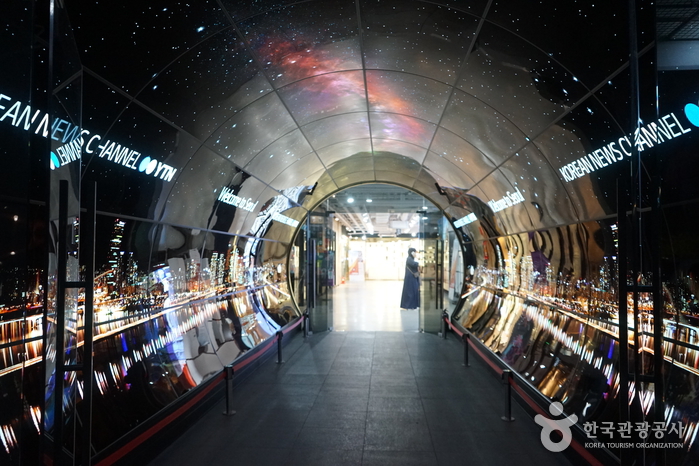
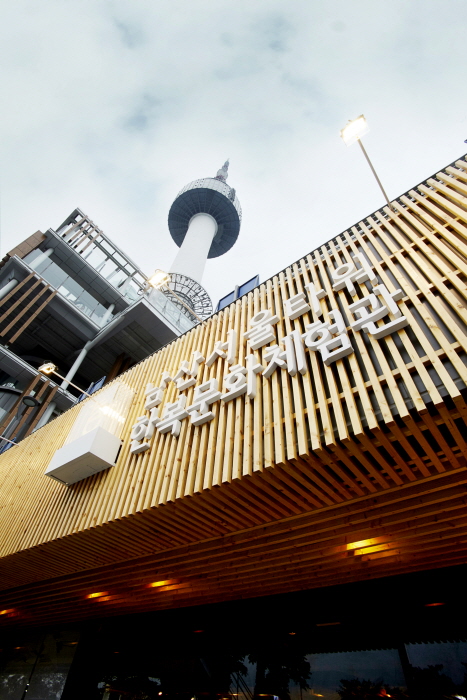
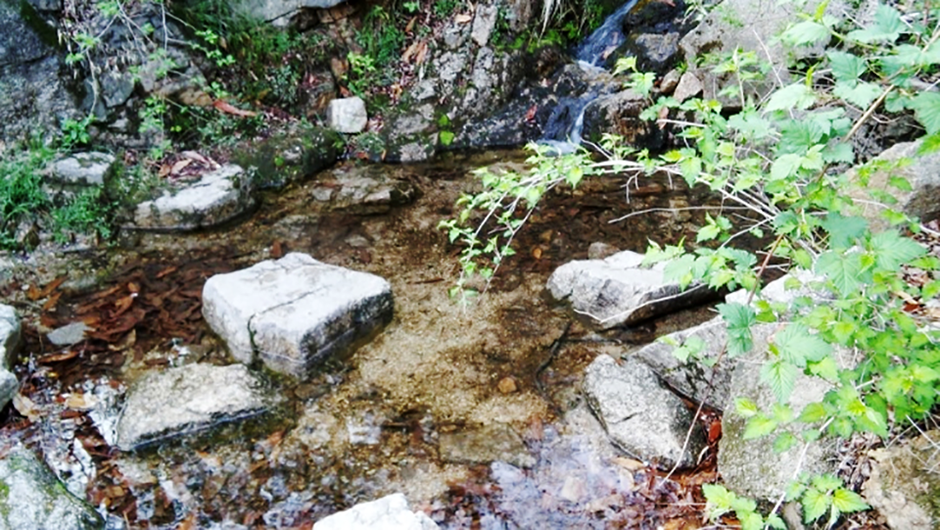
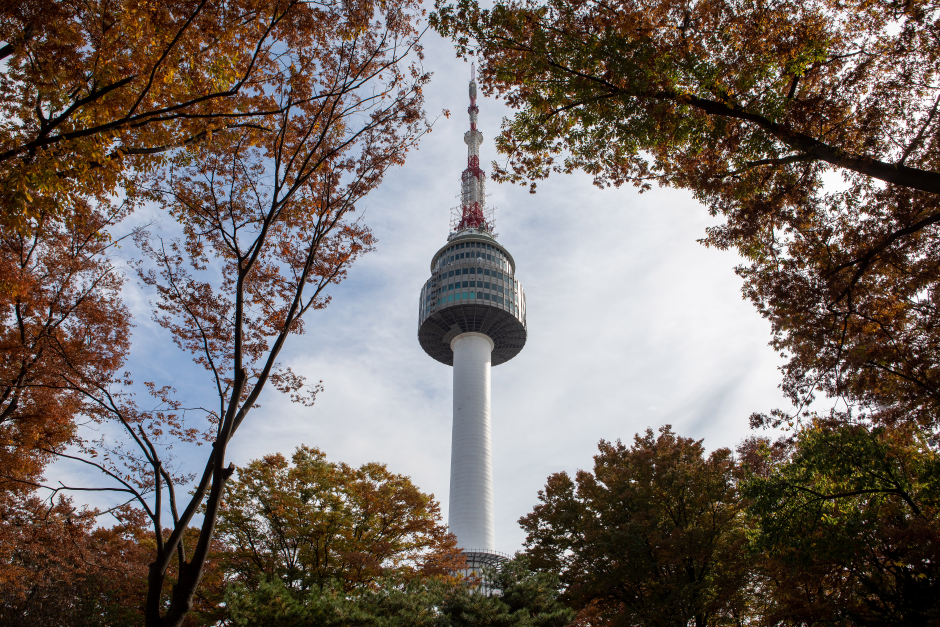
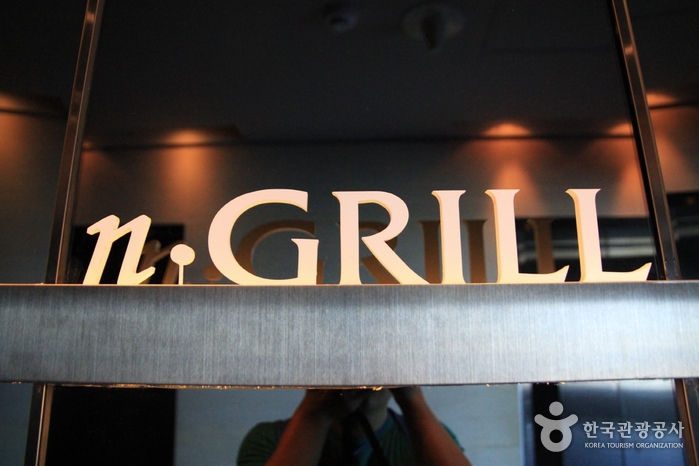
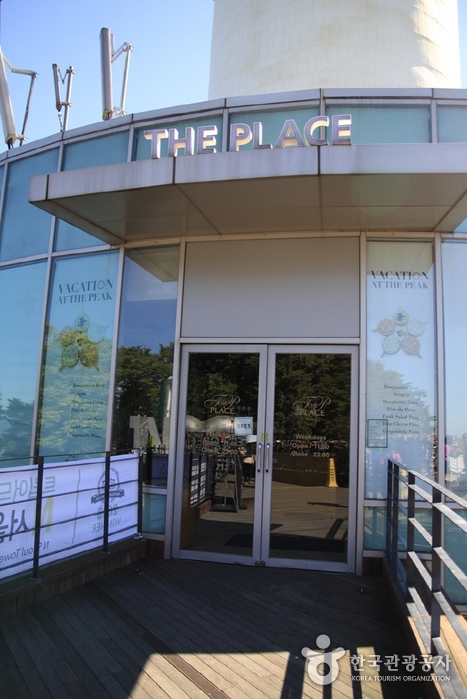
 Français
Français
 한국어
한국어 English
English 日本語
日本語 中文(简体)
中文(简体) Deutsch
Deutsch Español
Español Русский
Русский